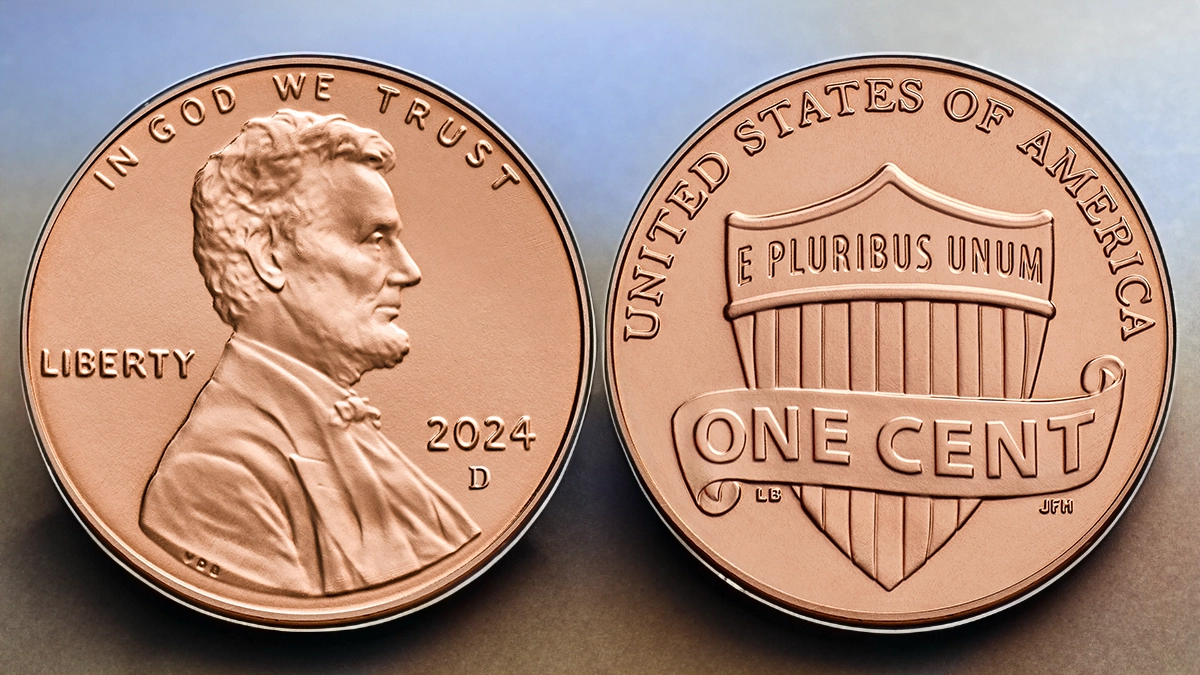
By Charles Morgan and Hubert Walker for CoinWeek Notes …..
The Lincoln Shield Cent, which debuted in 2010, was a continuation of the story told by the four reverses of the 2009 Lincoln Bicentennial type that it replaced. The Bicentennial Cent celebrated the life of Abraham Lincoln, from his birth in a log cabin in Kentucky to his arrival in Washington as the newly elected 16th President of the United States. The Shield Cent, then, is the fifth and final chapter in the story, representing not only Lincoln’s protection of the Union from dissolution during the Civil War but also the work of future generations to maintain the unity of our nation.
This commemoration had been in the works for many years, even before the one-year Bicentennial Cent had replaced the long-running Lincoln Memorial Cent in 2009. On December 22, 2005, President George W. Bush signed into law the Presidential $1 Coin Act (PDF link), which created the Presidential Dollar. The legislation also authorized the First Spouse and American Gold Buffalo bullion coin programs, as well as the Bicentennial Cent. Section 303 of the Act mandates that the reverse of the Lincoln Cent after 2009 be “emblematic of President Lincoln’s preservation of the United States of America as a single and united country.”
The Commission of Fine Arts (CFA) and the Citizens Coinage Advisory Committee (CCAC) reviewed candidate designs in the spring of 2009. Even though both groups advise the Secretary of the Treasury regarding coin design, they often disagree. In this case, the CFA had selected reverse design LP-18 at its meeting on April 16. This design featured 13 wheat stalks tied together in one sheaf with a large ring in the middle. The CCAC passed on LP-18 at its April 28 meeting, opting instead for LP-13 – the eventual Shield Cent reverse. Ultimately, design decisions are made by the Treasury Secretary, but the United States Mint made it easy on Secretary Geithner when it removed the wheat sheaf reverse from the running for its too-close resemblance to a 1924 2 pfennig coin from the Weimar Republic of Germany.
The new Shield Cent design was unveiled on November 12, 2009. No changes were made to the 100-year-old obverse, though it was re-engraved from Victor David Brenner’s original Galvano using modern Mint equipment and technology.
Collector enthusiasm for the first-year issue of a new Lincoln Cent type goes without saying, but the coins were frustratingly hard to find in circulation. The Great Recession of 2008 had caused demand from institutional banks for new coinage to plummet, which meant that the Federal Reserve wasn’t distributing Shield Cents to the banks where customers (and collectors) could buy rolls and bags. Interestingly, Shield Cents were shipped to Puerto Rico first in January 2010 due to an acute coin shortage on the island.
In 2017, the Mint under Director David J. Ryder commemorated the 225th anniversary of its founding in 1792. To celebrate, Lincoln Shield Cents produced in Philadelphia bore a “P” mintmark for the first time in the Mint’s history. Collectors were caught completely by surprise, as the Mint had made no announcements about the new release. This was but one of several such moves made by Director Ryder explicitly for the benefit and encouragement of the hobby.
Another first occurred in 2019, when the Mint offered Uncirculated, Proof, and Reverse Proof cents with the “W” mintmark for West Point in the year’s Mint Set, Proof Set, and Silver Proof Set, respectively.
The reverse of the Lincoln Cent will change again in 2026 as part of the nation’s Semiquincentennial (250th anniversary) celebrations. Whether or not the Shield Cent reverse resumes in 2027 remains to be seen.
Exclusive Coverage on CoinWeek
CoinWeek contributor Joshua McMorrow-Hernandez writes about the unannounced and pleasantly surprising 2017-P Lincoln Cent release.
In this Coin Analyst article, Louis Golino discusses the numismatic achievements of outgoing Mint Director David Ryder, including the 2017-P. Having spoken with Director Ryder on multiple occasions, we can attest to his appreciation of coin collectors and desire to engage with the hobby.
Design
Obverse:
A right-facing Lincoln occupies most of the obverse. At the top, inside a raised rim and above Lincoln’s head, is the motto IN GOD WE TRUST. To the left of the portrait is the word LIBERTY, and to the right and slightly lower, is the date. Lincoln Shield Cents are minted in Philadelphia, Denver, and San Francisco, and were also minted in West Point in 2019; P, D, S, and W mintmarks appear below the date.
Reverse:
The reverse features a Union shield symbolic of the protection of the Union of these United States – in the past, present, and future. Before the Shield Cent, the Mint utilized the motif on many classic U.S. coins, such as Christian Gobrecht’s Liberty Seated coinage. The 13 alternating vertical stripes, representing the 13 original states that were once British colonies, are united in the large horizontal bar at the top representing the nation as a whole. The motto E PLURIBUS UNUM is lightly inscribed in the horizontal bar for greater emphasis. The legend UNITED STATES OF AMERICA runs clockwise along the top half of the rim. This legend is in a serif font; the other inscriptions are sans serif.
The large scroll unfurled in front of the shield with the denomination ONE CENT on it is rendered in such a way as to imply movement. Reverse designer Lyndall Bass explained in an early 2010 interview with her alma mater Indiana University that “money does not become true currency unless it is moving.” Her initials LB are below the scroll on the left side of the shield (viewer’s perspective). Future Chief Engraver Joe Menna sculpted the design; his initials JFM are below the scroll on the right side.
Edge:
The edge of the Lincoln Shield Cent is plain or smooth, without reeding or edge lettering.
Varieties
No major varieties are recognized yet by the industry, but minor obverse and reverse doubling is known on P-Mint issues.
Designers
Lithuania-born coin designer Victor David Brenner is best known for his iconic design for the Lincoln Cent (1909-Present) (View Designer’s Profile).
New Mexico artist Lyndall Bass is a painter and instructor known for her realistic works. She attended the Pennsylvania Academy of Fine Art and Indiana University.
Joseph Menna is a prolific sculptor who joined the U.S. Mint in 2005. He became Chief Engraver in 2019 (View Designer’s Profile).
Coin Specifications
| Lincoln Shield Cent | |
| Years of Issue: | 2010-present |
| Mintage (Circulation): | High: 4,691,300,000 (2016); Low: 1,963,630,000 (2010) |
| Mintage (Proof): | High: 1,689,216 (2010-S); Low: 646,177 (2022-S) |
| Alloy: | .975 zinc, .025 copper (.992 zinc, .008 copper core plated with pure copper) |
| Weight: | 2.5 g |
| Diameter: | 19.0 mm |
| Edge: | Plain |
| OBV Designer: | Victor D. Brenner |
| REV Designer: | Lyndall Bass | Joseph Menna |
* * *
Sources
https://www.congress.gov/109/plaws/publ145/PLAW-109publ145.pdf
https://www.numismaticnews.net/archive/ccac-ranks-reverse-designs-for-a-new-2010-lincoln-cent
http://homepages.indiana.edu/web/page/normal/13262.html
* * *




I have a lot of old coins that needs to be looked at
Why does the new Lincoln Cent not have the red white & blue striping on the shield, like the previous shields on U.S. coins? By this I don’t mean colorized coins but the international standards horizontal for blue, vertical for red, plain for white.